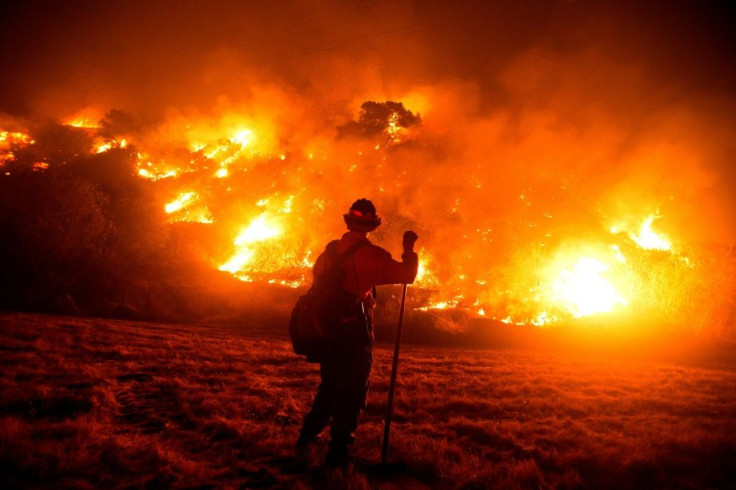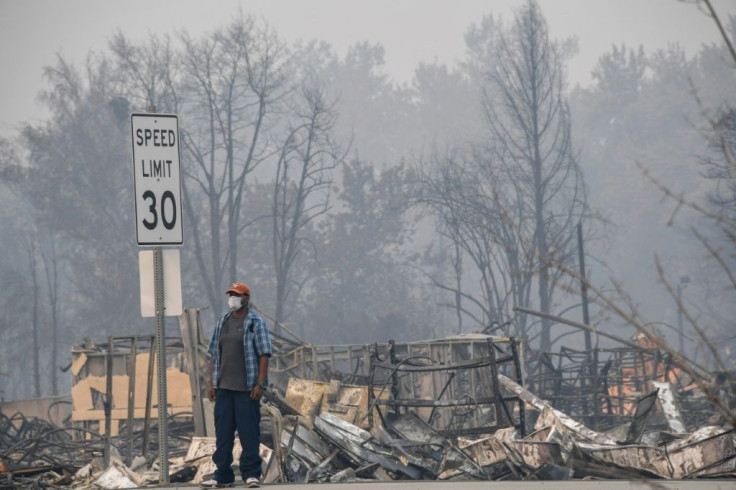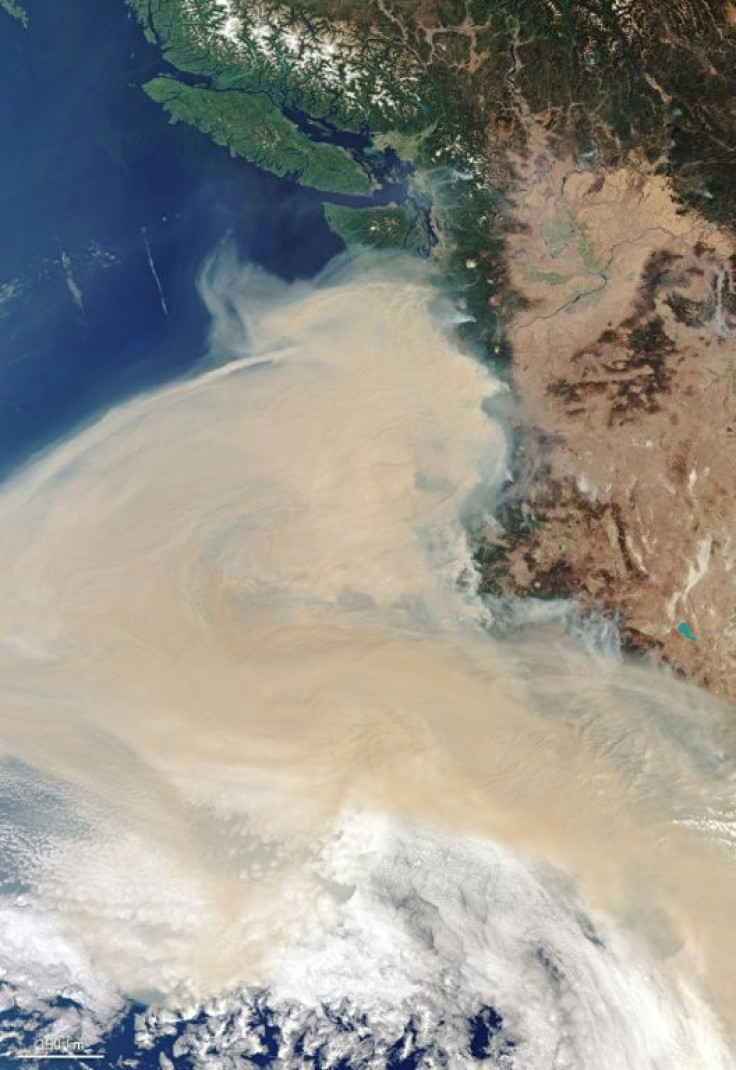California Braces For High Winds That Could Propel Deadly Wildfires
California faces more devastation from wildfires that have ravaged the West Coast, authorities warned Wednesday, with strong winds and dry heat expected to whip up flames from dozens of blazes raging across the state.
Governor Gavin Newsom said although firefighters had made progress in their battle to contain more than two dozen major wildfires, so-called Santa Ana winds could fuel the relentless blazes.
"With wind events that we are experiencing currently and what we anticipate over the coming days, we have to be mindful that even with high containment numbers, those fires are anything but behind us," he told a press briefing.

Highlighting the scale of the unfolding catastrophe, Newsom said the state so far this year has experienced 7,606 fires as opposed to 4,972 in 2019.
He said the flames have devoured nearly 2.3 million acres -- 1.5 million of them since mid-August -- as opposed to 118,000 last year.
"These numbers bear fruit to that assertion that this is historic," he said.

Newsom also appeared to hit out at US President Donald Trump, who visited the state earlier this week, saying he had "no patience for climate change deniers" who reject mounting scientific evidence that extreme weather events are linked to global warming.
Trump during his visit downplayed climate concerns over the wildfires, saying that global warming will reverse on its own.
"The scale and magnitude of these fires are at a level much higher than any of the 18 years that our monitoring data covers" since 2003, said Mark Parrington, senior scientist and wildfire expert at Europe's Copernicus Atmosphere Monitoring Service (CAMS).
He added that the fires are emitting so much pollution that thick smoke was visible over 8,000 kilometers (4,900 miles) away in northern Europe, underscoring the devastation of the blazes.

The heaviest smoke from the fires remains over the US West Coast, with cities like Los Angeles and San Francisco registering some of the worst air quality in the world.

Exhausted firefighters are now battling 79 large fires, with "possible critical fire weather" expected in northeast California, the National Interagency Fire Center said Wednesday.
"With no significant precipitation in sight, California remains dry and ripe for wildfires," state firefighting agency Cal Fire said, adding that warmer weather expected this weekend would bring "elevated fire danger."
One of the blazes near Los Angeles, dubbed the Bobcat Fire, closed in on a historic observatory Tuesday but crews managed to protect the structure.
Apart from California, which has borne the brunt of the overall death toll of more than 30, the coastal states of Oregon and Washington have also experienced record blazes that have encroached on major population centers.
In Oregon, 10 people were killed in the infernos fueled by dry conditions.
Rain was expected to bring some much-needed relief for parts of Oregon and Washington on Wednesday.
The flames across the West Coast -- some of which were caused by lightning strikes -- have so far scorched more than five million acres (two million hectares) and displaced tens of thousands of people.
The disaster has brought the issue of global warming to the forefront of the US presidential campaign, with less than two months before the election.
It has been difficult historically to prove a link between individual extreme weather events and climate change.
However, there is a growing evidence showing blazes like those in the US would not be so intense and widespread without the warming humanity has caused on Earth during the industrial age.
In general, climate change has been shown to amplify droughts that dry out regions, creating ideal conditions for wildfires.
The economic impact from this year's fires is expected to be staggering, with one expert estimating the damage at more than $20 billion.
Authorities have also warned that the smoke from the fires could worsen the coronavirus pandemic, as people forced to evacuate seek shelter in shared accommodation.
Inhaling smoke and ash could also further weaken the lungs of people infected with the virus and undermine the immune system.
© Copyright AFP 2024. All rights reserved.











